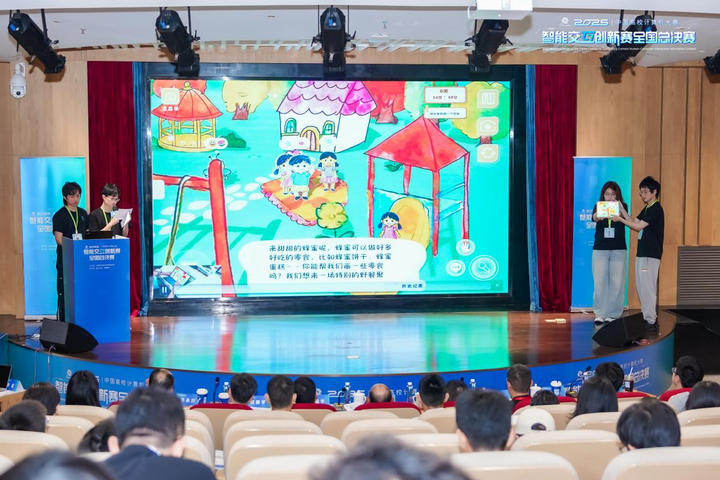How Huawei Integrates AI into Its Operating System

Huawei’s Vision: An AI-Centered Operating System Ecosystem
Huawei is aiming to build not just a traditional app ecosystem, but a full-scenario intelligent operating system with AI at its core.
> “When people first start using our system, they feel it’s fresh and novel. As they keep using it, more and more apps are developed and launched. The experience keeps improving over time.” — Richard Yu, Huawei Developer Conference, June
Yu describes HarmonyOS’s user experience as a “smile curve” — improving steadily as the ecosystem evolves.
---
The Rise of HarmonyOS
- HarmonyOS launched under unique conditions, competing with iOS and Android for developers and users accustomed to those ecosystems.
- 23 million terminal devices were running HarmonyOS 5 by October 2023 — “the fastest growing operating system in smart device history.”
- By mid-2024:
- 30,000 native apps & cloud services online
- Massive investment & vertical integration from SoC → OS → frameworks → hardware
- Yet, the gap with iOS and Android remains.
---
Opportunity: AI Integration
While Apple and Google integrate AI cautiously:
- Apple Intelligence: Privacy-focused, step-by-step, on-device + private cloud.
- Google: Fragmented Android ecosystem; relies on top-layer integrations like the Gemini App.
Huawei’s advantage:
Independent OS → full vertical integration → deep architectural AI embedding.
---
HarmonyOS 6: AI Deeply Embedded
AI in HarmonyOS 6 is system-wide, not a standalone module.
Examples:
- Smart Wallpaper Creation: AI adjusts composition, typography, and artistic styles from photos (e.g. calligraphy style wallpapers).
- Anti-Scam & Privacy Alerts: Detects scam calls and “over-the-shoulder” snooping, triggering Anti-Peeping Mode.
- Voice-Driven Photo/Video Editing: AI applies lighting, bokeh, background changes, and assembles photo batches into videos with music.
- DJI OSMO Integration: Intelligent subject tracking; “virtual fitting mirror” outfit suggestions.
---
Solving Fragmentation: Unified AI Assistant
Instead of multiple separate assistants in different apps:
- Xiaoyi: Recognizes 16 dialects, acts as the unified intelligent service entry point for all tasks and apps.
- Examples:
- “Weekend Fishing Planning”: Gathers weather, maps, schedules.
- Third-party app control: Background ordering from JD.com.
- Automatic context actions: Adjusting volume for specific locations/apps.
---
Powered by Large Models: Multi-Agent Reasoning
Xiaoyi can:
- Research complex queries
- Integrate multiple specialized AI agents (e.g. healthcare, ticket booking)
- Coordinate actions & provide tailored results.
Industry Challenge:
Agent interoperability → emerging standards like MCP & A2A.
---
Agent-Centric Future
Shift in OS competition:
- From “App-centric” → “Agent-centric”
- Assistants handle user requests by orchestrating multiple agents.
HarmonyOS philosophy:
System adapts to people via learning preferences + proactive service delivery.
---
AI-Native App Redevelopment
HarmonyOS’s native kernel isn’t Android-compatible → every app must be rebuilt.
Challenges:
- Cost & time (e.g. WPS Office → 8 months for first native build).
Opportunity:
- New HarmonyOS Multi-Agent Framework (HMAF) gives:
- HarmonyOS Agent Communication Protocol
- Intent Framework
- Agent Kit
---
Developer Resources
Huawei offers:
- 4 development modes
- 50+ component capabilities
- 10 AI domain Kits
- 11 AI control categories
- 240+ standard intents
Xiaoyi Intelligent Agent Open Platform:
- Templates, plugins, models
- Embed agents into apps
- Example: Browser agent providing AI summaries & Q&A.
Xiaoyi Intelligent Agent Plaza:
- 80+ HarmonyOS app agents in multiple categories
- First launches from Damai, JD.com, etc.
---
Vertical Integration Advantage
HarmonyOS benefits from Huawei’s control over:
SoC → OS → Frameworks → Hardware → AI Stack
- Comparable to Apple & Google’s integrated devices.
- Enables performance & experience optimization across all layers.
---
AiToEarn Ecosystem Complement
AiToEarn官网: Open-source global AI content monetization platform
Tools to:
- Generate AI content
- Cross-platform publish
- Analytics & model ranking → AI模型排名
Supports platforms like Douyin, Bilibili, Rednote, Instagram, Threads, YouTube, etc.
---
Tiangong Project: Accelerating AI Ecosystem
Huawei announced:
- 1 billion RMB investment
- Goals:
- Incubate 10,000 AI-native meta-services
- 1,000 intent frameworks
- 5,000 intelligent agents
---
Organizational Restructuring for AI Leadership
September 2024:
- Yu Chengdong appointed Chairman of Huawei’s Product Investment Review Board (IRB).
- IRB: Cross-functional resource allocation & strategy coordination.
- Mission: Lead Huawei to global AI leadership, with HarmonyOS as the flagship.
---
Key Takeaways
- HarmonyOS 6: AI embedded deeply in architecture → unified experience.
- Shift to agent-centric computing will redefine OS competition.
- Huawei’s vertical integration enables fast execution & optimization.
- Organizational restructuring shows company-wide AI focus.
- Ecosystem complements like AiToEarn align with Huawei’s vision — empowering both developers & creators.
---

---
Would you like me to create a visual summary infographic highlighting HarmonyOS’s AI advantages and ecosystem strategy? That would make this long-form content far easier to absorb.



